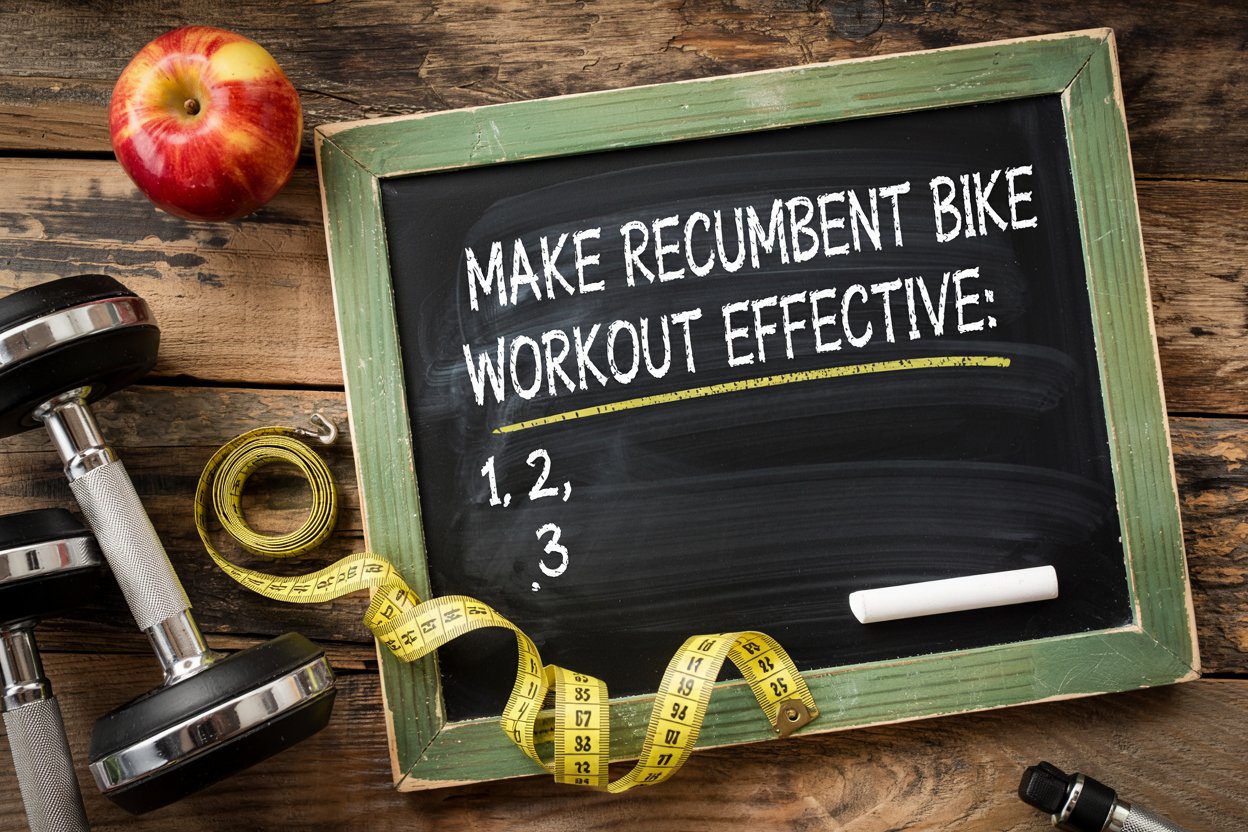How to Adjust Recumbent Bike Position: Seat Setup, Leg Alignment, and Posture Tips

Why Choose a Recumbent Exercise Bike for Home Use?
A recumbent exercise bike is one of the best low-impact cardio machines for home use, especially for seniors, beginners, and those with joint pain. Its reclined seat and backrest provide full lumbar support, reduce pressure on the knees and hips, and make it safer than upright bikes. This comfort-focused design helps users stay consistent with workouts while minimizing the risk of injury—making it ideal for rehabilitation and long-term fitness routines.
According to our user research at Vanswe Fitness, the recumbent bike is especially popular among the following groups::
- Older adults
- People recovering from injuries
- Beginners who want a safer alternative to upright bikes
However, proper riding position and form are key to avoiding injury and maximizing results. That’s what we’re here to cover.
How to Find the Correct Recumbent Bike Position

The correct recumbent bike position ensures your entire body is aligned for comfort and efficiency. Sit so your back rests flat against the seat, your feet reach the pedals without strain, and your knees, hips, and ankles stay in line throughout the motion. This overall setup reduces joint stress and allows for smooth, powerful pedaling.
✅ Key goals of a proper recumbent bike position:
- Avoid overextending your legs
- Keep your knees aligned
- Maintain back support with a neutral spine
Before you start, ensure your seat position, pedal distance, and backrest angle are customized to your body.
Source: The American College of Sports Medicine [1] emphasizes that aligning joints during cycling reduces musculoskeletal strain and improves mechanical efficiency.
How to Adjust Recumbent Bike Seat Position

Your seat position directly affects your leg range of motion and comfort. To adjust the recumbent bike seat, move it forward or backward until your front leg stays slightly bent—about 10 to 15 degrees—when the pedal is at full extension. This fine-tunes your pedaling range and protects your knees from hyperextension. A proper seat position is the foundation for safe and effective lower-body movement.
How to adjust:
- Slide the seat forward or backward so that when the pedal is furthest away, your knee remains slightly bent (~10–15°).
- Ensure your back fully contacts the backrest to support your spine.
- Keep your hips level—if your hips rock side to side while pedaling, the seat may be too far.
👉 Tip: When pedaling, your knee should never fully lock or extend straight.
Source: According to a study published in Biomedical Sciences Instrumentation [2], maintaining a 10–15° knee bend at full pedal extension during recumbent cycling helps reduce knee joint stress and may protect against overuse injuries. (Reiser RF 2nd, Broker JP, Peterson ML, 2004)
Related Article: Best Recumbent Exercise Bikes 2025
How to Adjust Recumbent Bike Position

To properly adjust your recumbent bike position, focus on how your legs, knees, and feet align with the pedals. Your knees should move in line with your hips and feet, avoiding any inward or outward flare. Aim for a stable ankle, push through the mid-foot, and maintain smooth, balanced pedaling to protect your joints and boost efficiency.
Your leg position controls your pedaling efficiency and knee safety.
Ideal leg position checklist:
- Knees should move in line with your hips and feet (no “knock-knees” or outward flare)
- Ankles stay stable—avoid excessive toe-pointing
- Push through the mid-foot or ball of the foot
Common mistakes:
- Overreaching with straight legs
- Knees flaring outward
- Pedaling with toes instead of full foot
Source: A study in the Journal of Geriatric Physical Therapy suggests that maintaining an upright seated posture with lumbar support significantly reduces lower back strain during cycling.
What's the Proper Recumbent Bike Posture

Even though you’re seated and supported, posture matters—especially during longer sessions. Proper recumbent bike posture means sitting upright with your back flat against the backrest, shoulders relaxed, and eyes looking forward. Your hands should rest lightly on the side handles without shrugging, and your core should remain engaged throughout the ride. This posture reduces neck and back strain while supporting efficient pedaling.
Correct posture on a recumbent bike:
- Sit upright with your back firmly against the seat
- Keep shoulders relaxed and down
- Grip side handles or heart rate sensors without shrugging
- Eyes forward, avoid tilting the head
Poor posture can lead to neck strain, lower back pain, and reduced efficiency.
Source:A study published in the Journal of Sports Sciences [3]suggests that maintaining an upright seated posture with lumbar support significantly reduces lower back strain during cycling (Priego Quesada et al., 2016, DOI: 10.1080/02640414.2016.1215496).
What Is Proper Recumbent Bike Form?
While posture is your static body position, form refers to how you move throughout your workout. Proper recumbent bike form means using smooth, controlled pedal strokes with even pressure from both legs while maintaining a stable upper body. Avoid bouncing, shifting your hips, or gripping the handles too tightly. Good form ensures efficient movement, prevents joint strain, and helps you ride longer without fatigue.
Good form means:
- Smooth, controlled pedaling (avoid jerky or bouncing motion)
- Even pressure on both legs
- Moderate resistance that doesn’t force you to rock or shift your body
How to improve form:
- Use a consistent pace—don’t sprint unless you're experienced
- Don’t grip the handles too tightly
- Focus on fluid movement, not brute force
🎯 Form ≠ Speed. Form = Efficiency + Safety.
Source: Research from the the Journal of Applied Physiology (2018) [4] showed that consistent, controlled pedaling improved aerobic capacity and reduced fatigue in patients with musculoskeletal issues.
How to Adjust Recumbent Bike Setup
Not every user needs the same setup. To adjust your recumbent bike setup for different users, tailor the seat distance, backrest angle, and pedal resistance based on the rider’s height, goals, and mobility level. Beginners and seniors may prefer lower resistance and upright posture, while fitness users may benefit from more challenging settings with precise leg alignment. Personalizing the setup improves comfort, safety, and workout effectiveness.
🔹 Beginners:
- Prioritize comfort and basic leg position
- Start with low resistance and perfect your posture
🔹 Older adults:
- Emphasize back support and low impact movement
- Avoid aggressive pedal positions
🔹 Rehabilitation users:
- Follow therapist guidance on leg angle and intensity
- Focus on symmetrical movement
🔹 Fitness and weight loss users:
- Balance proper form with interval resistance training
- Maintain core engagement for better posture
Best Tools to Improve Recumbent Bike Position, Posture, and Form
The best tools to improve your recumbent bike position and form include a mirror for visual feedback, a smartphone camera for recording, and heart rate sensors to monitor effort. These tools help you check your alignment, correct posture mistakes, and maintain consistent pedaling form for a safer, more effective workout.
Make your workouts more effective with these practical tools:
- ✅ Mirror: Watch your body alignment in real-time
- ✅ Smartphone camera: Record yourself to check form
- ✅ Fitness app: Monitor heart rate and pedaling cadence
- ✅ Heart rate sensors: Ensure you’re not overexerting due to poor posture
Source: The American Heart Association [5] recommends monitoring heart rate to stay within your target aerobic zone, especially during low-impact cardio like recumbent biking.
Common Recumbent Bike Position and Form Mistakes + Checklist

Common recumbent bike mistakes include overextending the legs, hunching the shoulders, and pedaling with your toes instead of the full foot. These errors can lead to joint strain, poor muscle engagement, and reduced workout effectiveness. Spotting and correcting them early helps improve safety and performance.
❌ Common issues:
- Overextending the legs
- Rounding or arching the back
- Shoulders tensed or shrugged
- Uneven pedal pressure
- Pedaling only with toes
Source: According to a study "It's time we spoke about physical therapy and bicyclists" published on the American Physical Therapy Association [6], poor bike posture and overextension are leading causes of cycling-related joint pain and injuries.
✅ Daily rider checklist:
- Back flat against the seat
- Knees slightly bent at full extension
- Feet pushing from mid-foot
- Shoulders relaxed, head neutral
- Pedaling smooth and controlled
🔚 Conclusion: Position + Posture + Form = Effective, Safe Workouts
Using a recumbent bike is easy—but using it correctly is powerful. Mastering your seat position, leg alignment, posture, and form can transform a basic ride into a low-impact, full-body cardio session that protects your joints and boosts your results.
Whether you're just getting started or using the bike for rehabilitation or weight loss, this guide ensures you're riding smarter, not harder.
FAQs
❓ What is the correct posture for a recumbent bike?
❓ Where should the seat be on a recumbent bike?
The seat should be positioned so that your leg remains slightly bent—about 10 to 15 degrees—when the pedal is at its farthest point. This setup helps prevent knee strain and ensures a full, controlled range of motion during cycling.
❓ What is the correct leg position on a recumbent bike?
Your knees should move in line with your hips and feet without flaring inward or outward. Avoid locking your knees, keep your ankles stable, and push through the mid-foot or ball of the foot to ensure safe and effective pedaling.
Reference
- American College of Sports Medicine, Chodzko-Zajko, W. J., Proctor, D. N., Fiatarone Singh, M. A., Minson, C. T., Nigg, C. R., Salem, G. J., & Skinner, J. S. (2009). American College of Sports Medicine position stand. Exercise and physical activity for older adults. Medicine and science in sports and exercise, 41(7), 1510–1530. https://doi.org/10.1249/MSS.0b013e3181a0c95c
- Reiser, R. F., 2nd, Broker, J. P., & Peterson, M. L. (2004). Knee loads in the standard and recumbent cycling positions. Biomedical sciences instrumentation, 40, 36–42.
- Priego Quesada, J. I., Pérez-Soriano, P., Lucas-Cuevas, A. G., Salvador Palmer, R., & Cibrián Ortiz de Anda, R. M. (2017). Effect of bike-fit in the perception of comfort, fatigue and pain. Journal of sports sciences, 35(14), 1459–1465. https://doi.org/10.1080/02640414.2016.1215496
- Rudsits, B. L., Hopkins, W. G., Hautier, C. A., & Rouffet, D. M. (2018). Force-velocity test on a stationary cycle ergometer: methodological recommendations. Journal of applied physiology (Bethesda, Md. : 1985), 124(4), 831–839. https://doi.org/10.1152/japplphysiol.00719.2017
- American Heart Association. (n.d.). Target heart rates chart. https://www.heart.org/en/healthy-living/fitness/fitness-basics/target-heart-rates
- American Physical Therapy Association. (2021, September 21). It's time we spoke about physical therapy and bicyclists. https://www.apta.org/article/2021/09/21/bicyclists
Latest Articles





